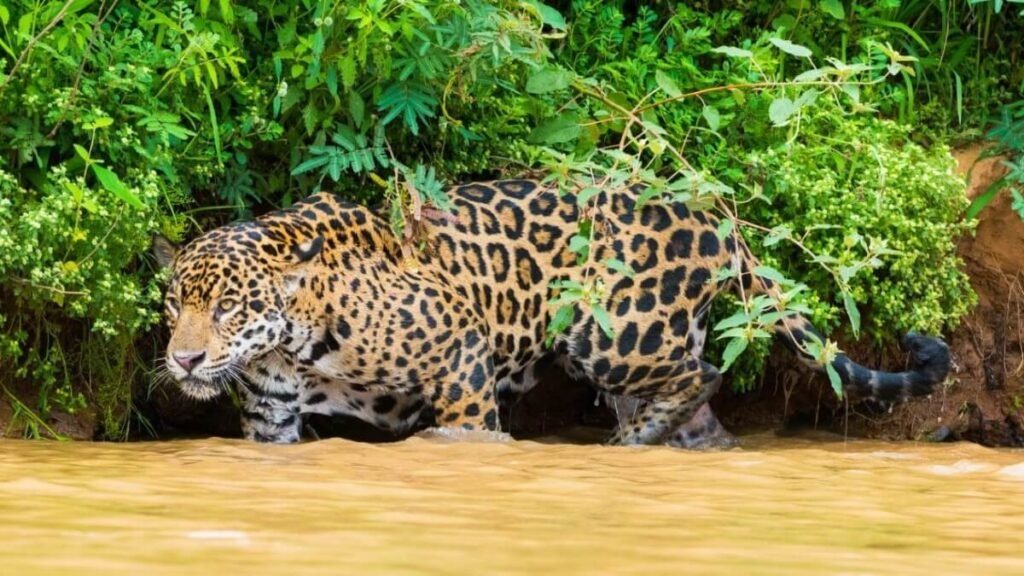The jaguar, also known as Panthera onca, is the most iconic predator in South America, and its dominance in the Pantanal has earned it the title of undisputed king of this vast region. With its imposing presence and unmatched hunting skills, this feline plays a crucial role in the ecosystem’s balance. It’s admired by wildlife enthusiasts and symbolizes the biodiversity that defines the Pantanal. But what characteristics make the jaguar the “King of the Pantanal”?
1. The Great Hunter of the Pantanal
The jaguar is an exceptional hunter with a unique skill set that places it at the top of the Pantanal’s food chain. Its ability to hunt on both land and water makes it one of the most versatile felines on the planet.
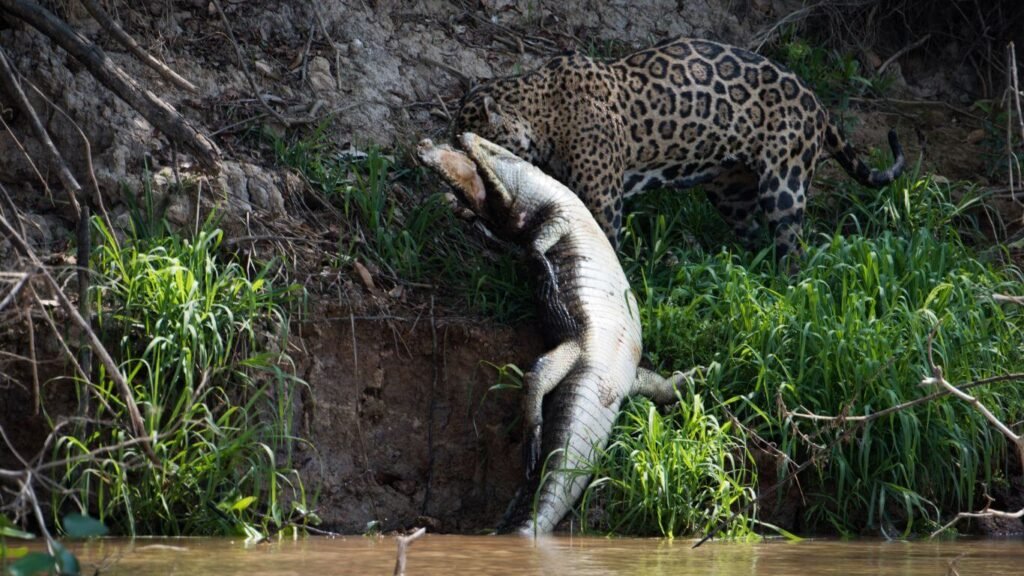
- Strength and Size: Pantanal jaguars are the largest of their species, weighing up to 220 pounds. This strength allows them to hunt large prey, such as capybaras, caimans, and even livestock.
- Powerful Jaw: One of the jaguar’s most impressive characteristics is its bite, the strongest among felines relative to its size. This allows it to pierce the shells of reptiles like turtles or crush the skulls of its prey with ease.
- River Navigator: Unlike other big cats, the jaguar is an excellent swimmer. This ability allows it to hunt caimans and fish in the rivers of the Pantanal, making it even more effective in its aquatic environment.
2. The Jaguar, King of the Pantanal, and Its Essential Role in the Ecosystem
The jaguar is not only a skilled hunter but also plays a vital role in maintaining the Pantanal ecosystem’s balance. As an apex predator, it regulates the populations of other species, helping to prevent overpopulation and preserve biodiversity.
- Population Control: By hunting animals like capybaras, caimans, and deer, the jaguar helps control their populations, preventing overpopulation and allowing other species to thrive as well.
- Habitat Protection: Jaguars are an umbrella species, meaning their protection also safeguards the habitats of many other species. Protecting the jaguar involves conserving large areas of the Pantanal, benefiting a wide range of flora and fauna.
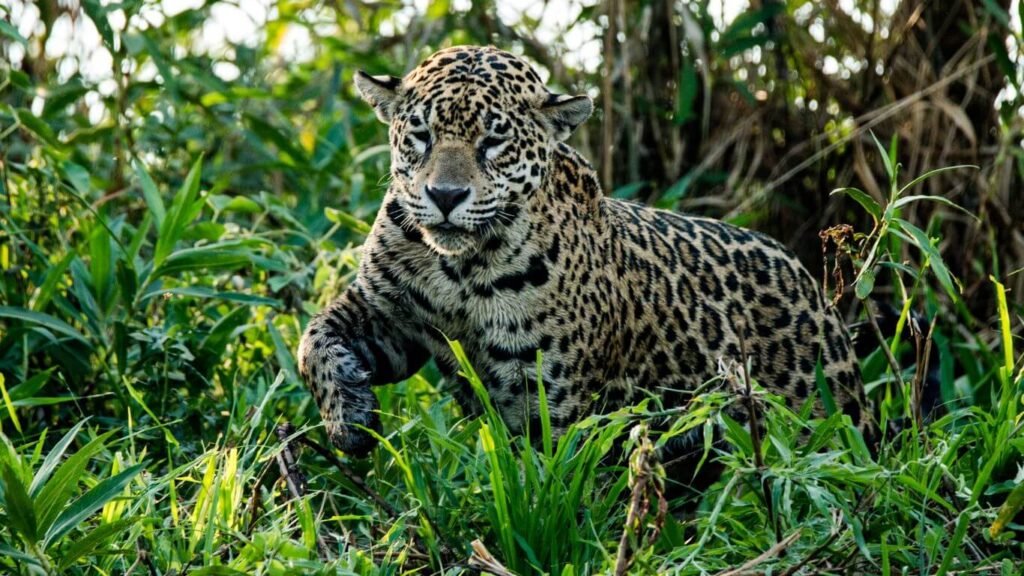
3. Jaguar Adaptations: How the King of the Pantanal Thrives in Its Environment
The Pantanal is one of the world’s largest wetlands, featuring a mix of savannas, forests, and rivers that present unique challenges for any animal that lives there. The jaguar, however, has adapted perfectly to this environment.
- Vast Territory: A single jaguar’s territory can cover up to 30 square miles. Its ability to move across various terrains, from dense jungles to swampy areas, allows it to hunt in a wide variety of habitats.
- Camouflage: The jaguar’s coat markings, known as rosettes, are not only visually striking but also incredibly effective as camouflage. In the shadows of the Pantanal, these rosettes help it stay hidden, both from its prey and from human threats.
4. The Cultural King of the Pantanal
The jaguar is more than just a king in terms of physical dominance in the Pantanal; it also holds an important place in the local culture. For many indigenous and rural communities, the jaguar symbolizes strength, power, and respect.
- Myths and Legends: In indigenous cultures, the jaguar is often seen as a protector of the forest and a spiritual symbol. Its figure appears in many legends that speak of its power and intelligence.
- Wildlife Tourism: Today, the jaguar also plays a crucial role in the local economy. Jaguar watching has become one of the main tourist activities in the Pantanal, attracting visitors from all over the world. These tourists not only seek to capture the jaguar’s beauty in photos but also contribute to its conservation.
5. Challenges to Jaguar Conservation
Despite being the king of the Pantanal, the jaguar faces serious threats that endanger its reign. Habitat loss, poaching, and conflicts with local ranchers are just a few of the challenges this majestic feline faces.
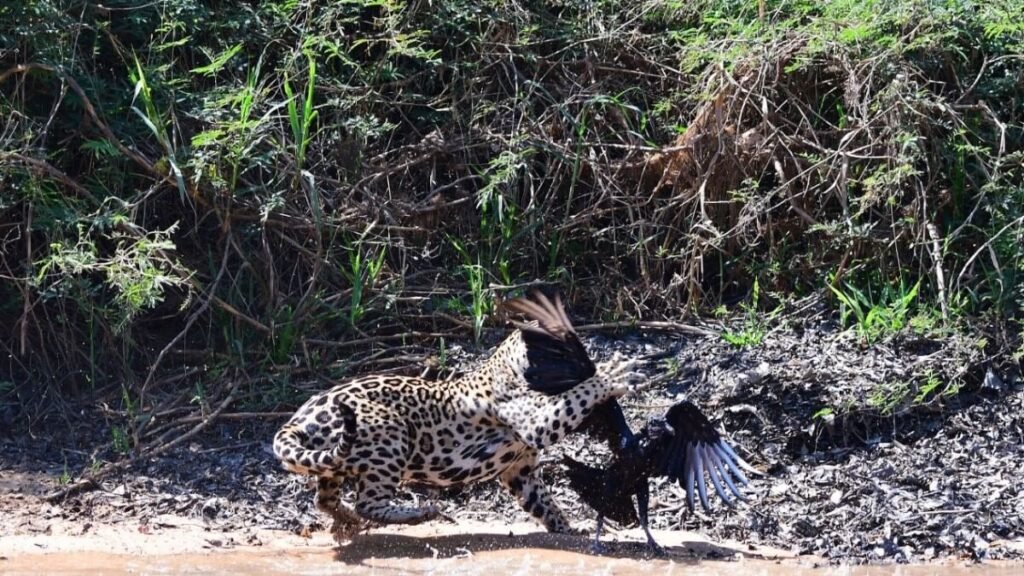
- Conflicts with Ranchers: The expansion of agriculture and cattle ranching in the Pantanal has led to greater interaction between jaguars and humans. When a jaguar preys on livestock, it may provoke retaliatory hunting by ranchers, threatening jaguar populations.
- Active Conservation: Fortunately, there are conservation initiatives underway aimed at protecting jaguars and reducing conflicts with ranchers. These efforts include education programs, compensation for livestock losses, and the creation of protected areas.
Frequently Asked Questions:
1. Why is the jaguar considered the “King” of the Pantanal?
The jaguar is the apex predator in the Pantanal. Its unmatched strength, adaptability, and hunting skills position it as the dominant species in its ecosystem.
2. Where is it most likely to spot jaguars in the Pantanal?
Jaguars can be spotted in the central and northern areas of the Pantanal, where guided tours focus on rivers and forested areas near water, especially during the dry season.
3. What is being done to protect jaguars in the Pantanal?
Various organizations and conservation projects are working to protect jaguars by creating protected areas, environmental education programs, and compensation initiatives for ranchers affected by jaguar predation.
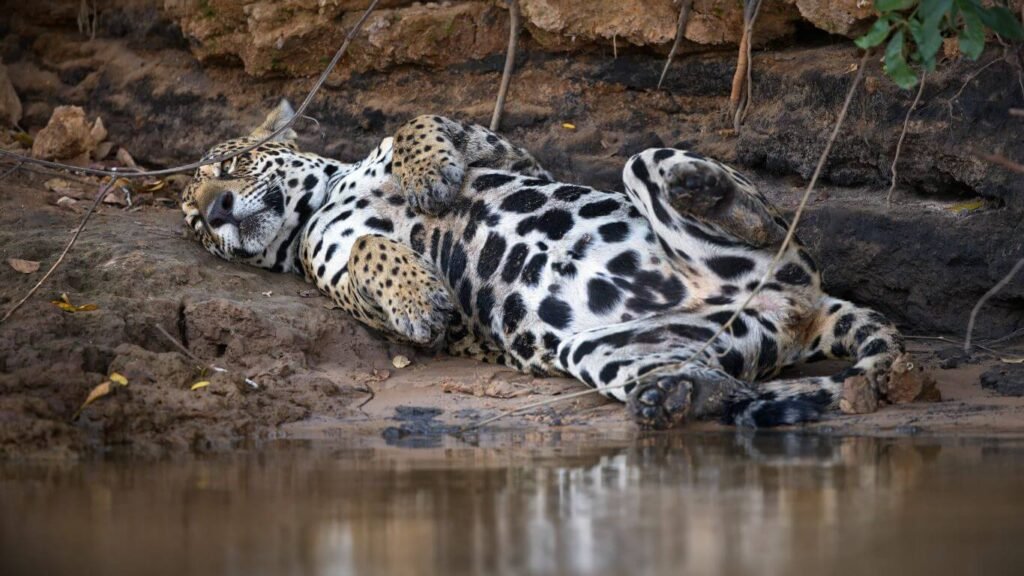
This majestic jaguar is not only an exceptional hunter; it also plays a fundamental role in the ecosystem. Through its unique skills, it helps maintain nature’s balance. Want to learn more about its life and challenges? Don’t miss this chance! Book your adventure with Lorenzo Expeditions and experience the thrill of spotting this magnificent feline in its natural habitat. Contact us today!

